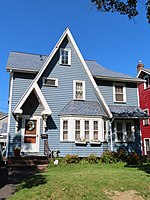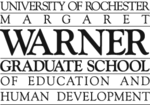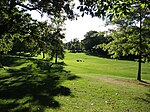Laboratory for Laser Energetics
The Laboratory for Laser Energetics (LLE) is a scientific research facility which is part of the University of Rochester's south campus, located in Brighton, New York. The lab was established in 1970 with operations jointly funded by the United States Department of Energy, the University of Rochester and the New York State government. The Laser Lab was commissioned to investigate high-energy physics involving the interaction of extremely intense laser radiation with matter. Scientific experiments at the facility emphasize inertial confinement, direct drive, laser-induced fusion, fundamental plasma physics and astrophysics using the Omega Laser Facility. In June 1995, OMEGA became the world's highest-energy ultraviolet laser. The lab shares its building with the Center for Optoelectronics and Imaging and the Center for Optics Manufacturing. The Robert L. Sproull Center for Ultra High Intensity Laser Research was opened in 2005 and houses the OMEGA EP laser, which was completed in May 2008. More than 270 Ph.D.s have been awarded as of 2022 for research conducted at the LLE. During summer months the lab sponsors local-area high school juniors in research at the laboratory, with most of their projects led by senior scientists at the lab.
Excerpt from the Wikipedia article Laboratory for Laser Energetics (License: CC BY-SA 3.0, Authors).Laboratory for Laser Energetics
Eastmoreland Drive, City of Rochester
Geographical coordinates (GPS) Address Nearby Places Show on map
Geographical coordinates (GPS)
| Latitude | Longitude |
|---|---|
| N 43.113108 ° | E -77.632012 ° |
Address
University of Rochester South Campus
Eastmoreland Drive
14620 City of Rochester
New York, United States
Open on Google Maps





